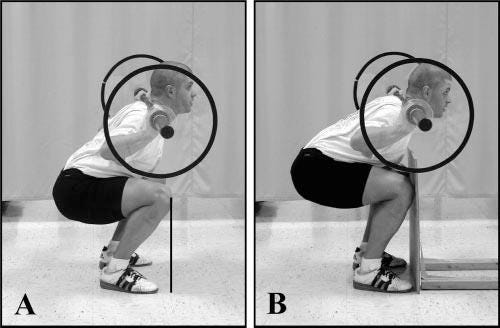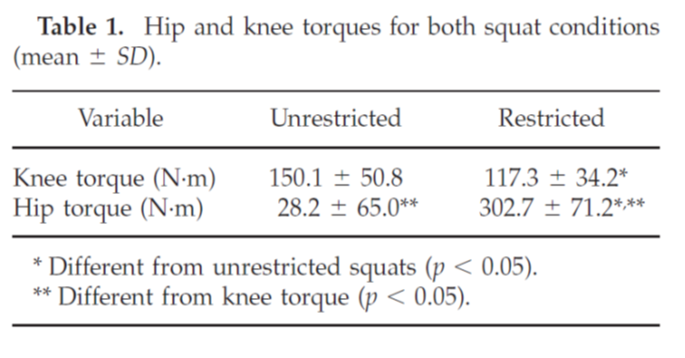🏋🏻♂️ Squatting With and Without Knees Over Toes
Jan 25, 2025
Read Time: 3 minutes
Today, we're breaking down a seminal research study examining the effects of performing squats with and without forward knee translation.
The barbell back squat is a popular exercise in training and rehab. You have likely programmed them and may be using them currently for your athletes.
However, it has been suggested that allowing the knee to translate over the toes increases shearing forces at the knee.
Thus, some have posited that squatting with a vertical shin is best and that you should not allow your knees to go over your toes.
This of course begs the questions...
What happens when you restrict the knees from going past the toes during the barbell back squat?
The Study: Effect of knee position on hip and knee torques during the barbell squat
 |
What did the researchers do?
- Recreationally trained men performed barbell back squats with and without knee restriction.
- Kinetics (torques) of the knee and hip were compared between squat techniques.
- Knee translation was restricted with a board placed in front of the toes to block the knees from going past the toes.
What happened?
- The unrestricted squat resulted in greater knee torque than hip torque whereas the restricted squat resulted in greater hip torque than knee torque.
- In this specific study, we see a relative disproportionate amount of torque at the hip during the restricted squats.
- For example, knee torque is 28% greater when you allow the knees to travel past the toes whereas hip toque increased nearly 10x when you restrict the knees.
 |
What does this mean?
- When you restrict the knees while squatting, the hips will produce more torque and when you allow the knees to travel past the toes, the hips will do less as the knees do more.
- If you are restricting the knees to reduce shear forces at the knee you should recognize that you have transferred that concern to the hip — and forces at the hip may be transferred through the low back, especially when the load is on the shoulders.
- In other words, increasing forward lean at the trunk and decreasing knee bend is likely to increase the forces at the low back.
Coach's Takeaway
- In order to optimize the forces at all involved joints, it is best to allow the knees to translate past the toes.
- Of course, if you have pain at the knees, you should address that — which is certainly a conversation for another date.
- Let individual anthropometrics and joint mobility guide technique and positioning.
When you're ready, you can join our community of coaches from around the world and level up your coaching knowledge, career, and impact. Learn more about the Applied Performance Coach.
If you want to get social, give me a follow on Twitter and Instagram by clicking the links below.
